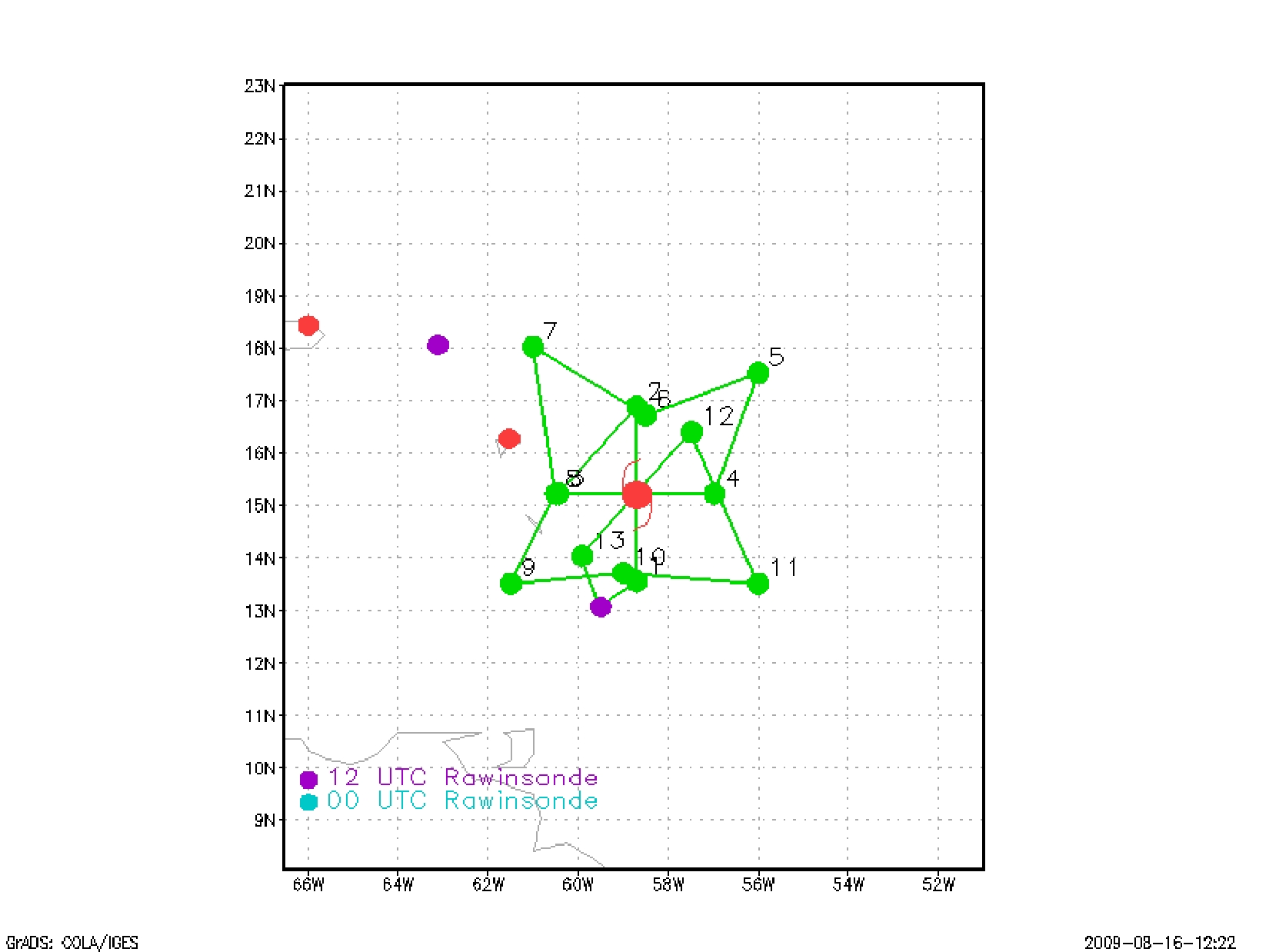
Figure 1: Planned flight track for NOAA 43 mission id: 20090816I1
| Aircraft Commander | Barry Choy |
| Co-pilot | Mark Nelson |
| Co-pilot | Cathy Martin |
| Navigator | Tim Gallagher |
| Navigator | Chris Sloan |
| Flight Engineer | Paul Darby |
| Flight Engineer | Joe Klippel |
| Flight Director | Jack Parrish |
| Flight Director | Richard Henning |
| Lead El Tech | Dana Naeher |
| El Tech | Joe Bosko |
| Avionics Tech | Damon Sans Souci |
| AOC co | Brad Kearse |
| Lead Project Scientist Radar Scientist |
Michael Black |
| Dropsonde Scientists | Bachir Annane Robert Black |
Mission Plan :
Ana was classified by NHC as a weak tropical storm with maximum surface winds of 35 kt located near 15°N, 56°W, or about 180 miles NNE of Barbados where the P3 and GIV were based. NHC was forecasting Ana to slowly and modestly strengthen while moving to the WNW at about 20 kt. Our planned takeoff was 2000 UTC and the mission was a 105 nmi radius figure 4, starting from the south and ending on the east side of Ana, followed by a starfish pattern around the periphery of the storm (see Fig. 1). The goal was to sample both the inner core with the tail Doppler radar and the environment with dropsondes. If time allowed, we would attempt a stair-step pattern from about 10 kft to 1500 ft in clear air for the aerosol probes.
It was pretty obvious that the environment was not favorable for Ana's development in that the convection was limited to a small area east of the center (Fig. 2). The G-IV was originally supposed to fly concurrently with N43 but was unable to because of mechanical problems. Total planned flight time was approximately 8h. No follow-on missions were planned into Ana as HRD's interests were shifting east as TS Bill was approaching.

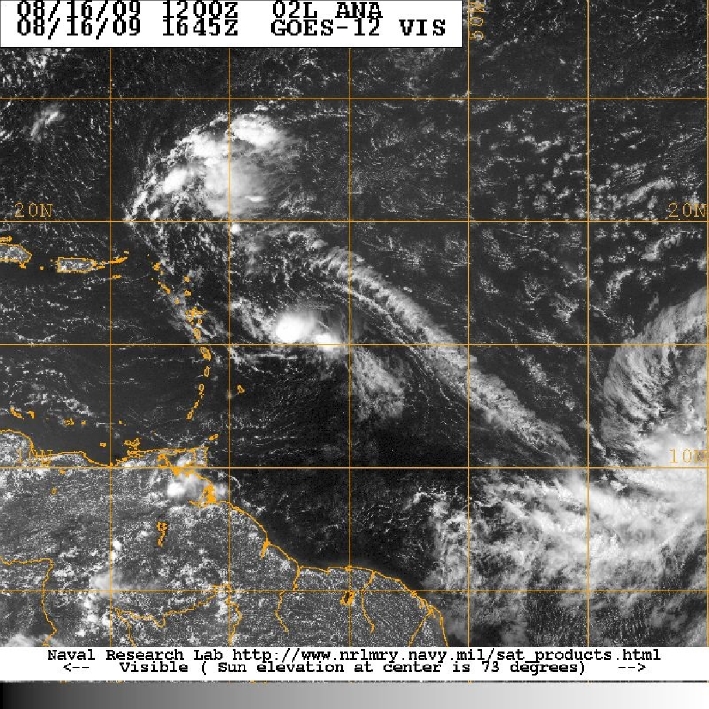
Mission Summary :
| Take off | Landing
| Barbados | 20:05 UTC
| Barbados | 03:00 UTC
| | ||
Takeoff time was 2005Z and the ferry altitude was 12kft. The Air Force was supposed to have a center fix on Ana before we took off but their takeoff was delayed and we would not have a good fix on where the center was. Because of the AF delay and that we were having problems with the aircraft data system, we decided to shift the pattern so that we would approach the supposed center of Ana from the east flying through the line of convection that was apparent on visible satellite imagery (see Fig. 3). We reached our IP, about 105 nmi ENE of Ana's center at 2058 UTC, released a dropsonde and began heading west. It was obvious that if Ana had a circulation it was small as winds at flight level and at all levels from the sonde showed easterly winds where southerly winds would have been expected. It was also obvious that Ana was imbedded within a very dry environment as data from the this first sonde showed dry air above 900 mb with a sharp temperature inversion at about 875 mb (Fig. 4).
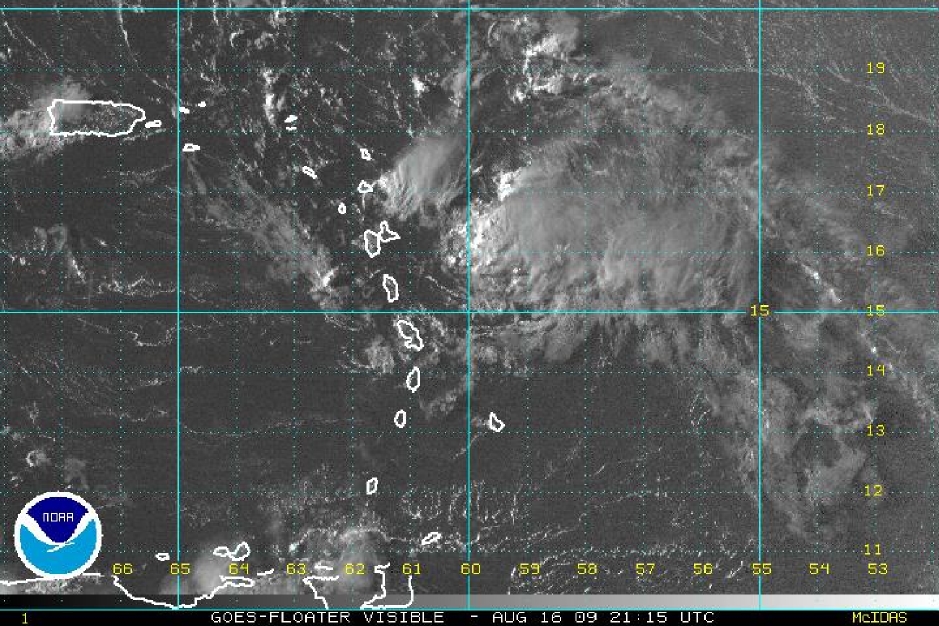
We reached the approximate center of Ana at 2120 UTC and a drop there revealed light winds and a MSLP of 1009 mb. Heading west from the center, we expected to find northerly winds but instead, we found that they were easterly, suggesting that Ana had deteriorated to an open wave or, perhaps, Ana never had a closed circulation. This was validated by the first Doppler analysis from the first E-W pass, which showed easterly winds at all altitudes. Heading south we were 105 nmi south of the apparent center at 2210 UTC and headed north toward the center for our second (and last pass) through. We were back near the center at 2245 UTC where a sonde measured a MSLP of 1008 mb. The center of the wave or circulation center was broad and not well defined. We extended out northward, outbound, leg to 135 nmi while climbing to 15000 ft to sample the dry air north of Ana. The dropsonde data (Fig. 5) showed similar structure to the sonde to the east of Ana with dry air above 900 mb and a temperature inversion near 875 mb. This thermodynamic structure was pretty consistent in the environment surrounding the limited convection Ana had. The easterly winds were also consistent, showing 30-45 kt of winds from just above the surface up to about 10,000 ft.
Since the environment seemed pretty consistent around Ana, we decided to modify the starfish pattern to reduce the flight time and allow for a stepped descent at the end of the flight. From our north point we headed SE to a point about 100 nmi NE of Ana then flew south about 200 nmi near the south point of our second pass. Dropsondes released along the way showed similar structure in that the air was relatively dry with fairly stable temperature profiles. Easterly flow dominated. We headed west to a point about 125 nmi SW of Ana's center then north to 125 nmi NW of Ana. This point ended our sampling of the environment surrounding Ana.
We headed south west of the Leeward Islands and performed a stair-step descent from 10000 ft to 1500 ft. We spent about 5 minutes each at altitudes of 10,000, 8000, 6000, 4000, 2000, and 1500 ft. We were almost at Barbados when we finished this sequence and landed there at 0300 UTC.
The data from this flight will show that Ana had the structure of a open wave during the mission and that convection was very limited, probably due to the dry, stable environment that the "storm" was imbedded in.
We performed and transmitted two Doppler analyses and "superobs" during the flight, one each from the E-W and S-N pass through the center of Ana or wave axis. A total of 16 dropsondes were released.
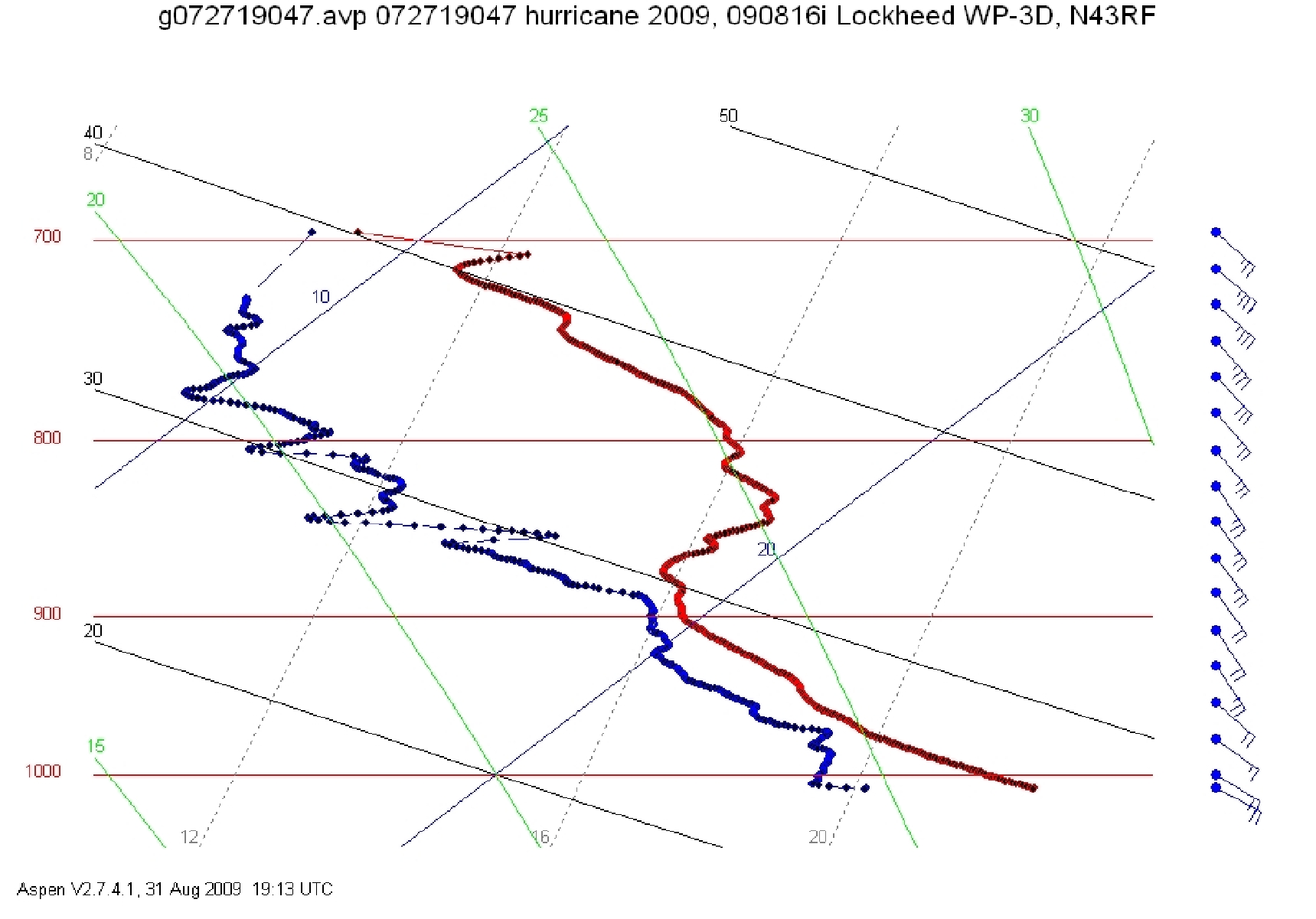
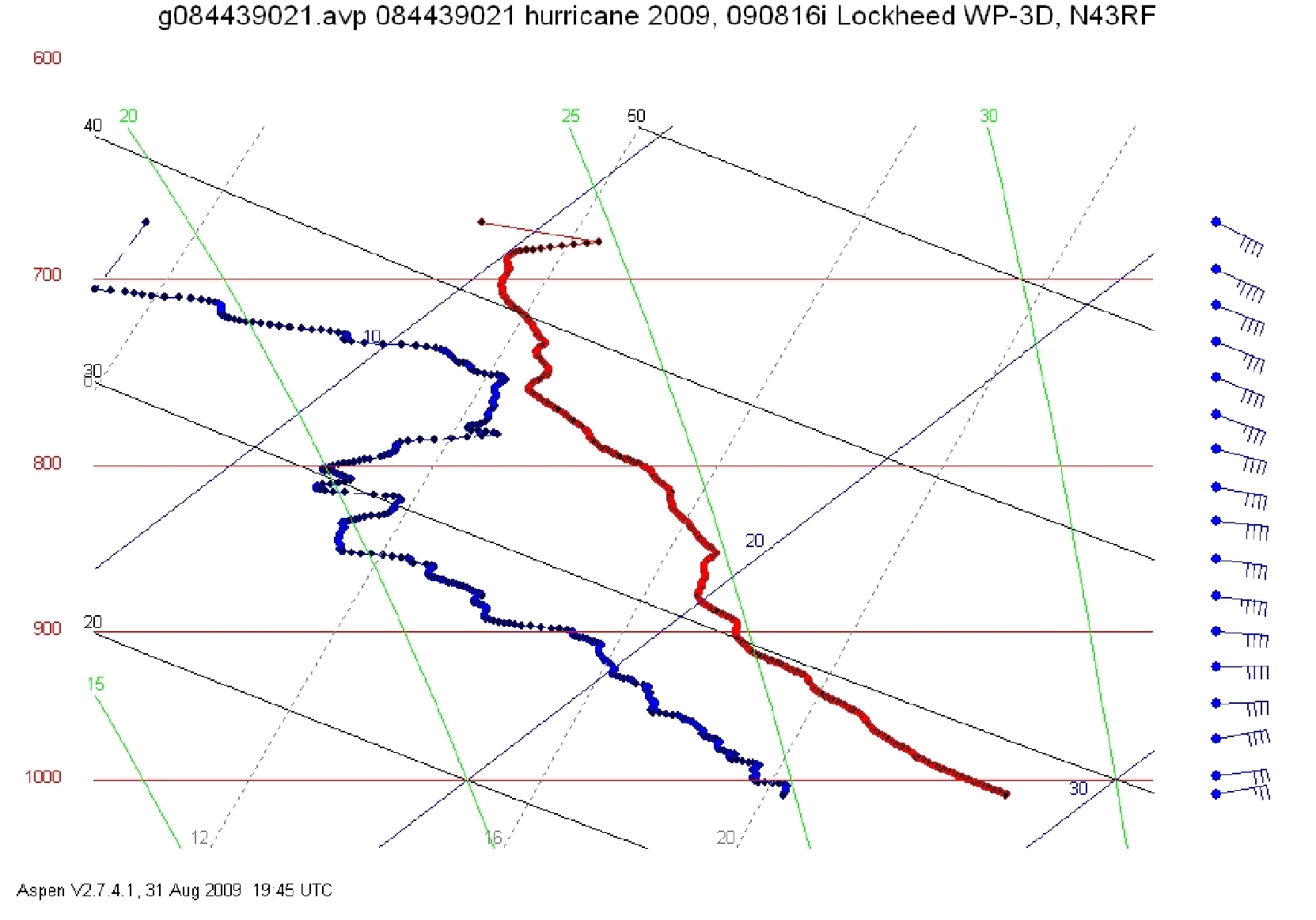
Problems :
The radar, flight-level, SFMR, and dropsonde systems worked well for most of the mission. There were some concerns about the data quality coming from the UMASS SFMR. AOC engineers had to reboot the data system computer at the beginning of the flight but it worked fine afterwards. The radar system froze at about 2335 UTC and was reset. About 10 minutes of non-crucial data were lost. One of the sondes failed to report winds and 3 of the sondes were not transmitted to the HRD workstation. This data is recoverable since AOC records the sonde data independently. The FTP communication software and hardware for the radar products all worked very well.
Michael Black
8/27/09
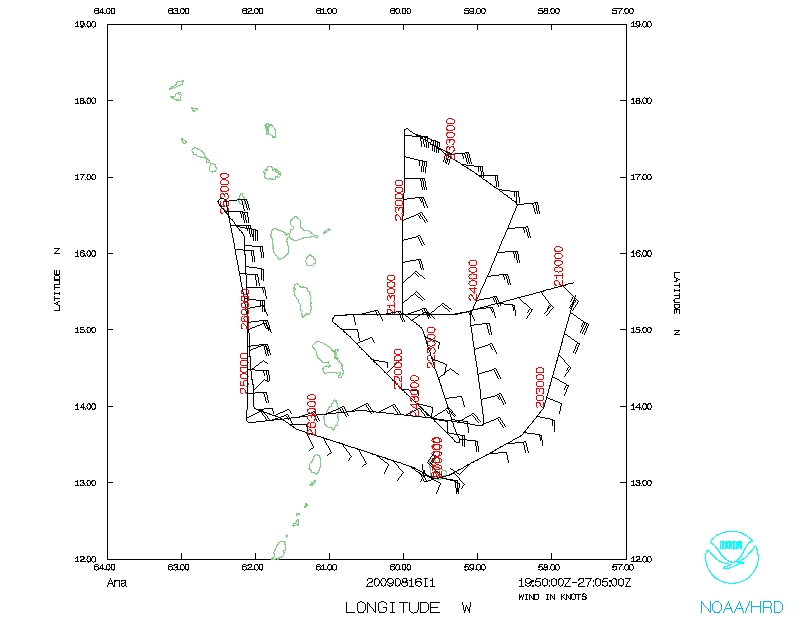 Flight track |
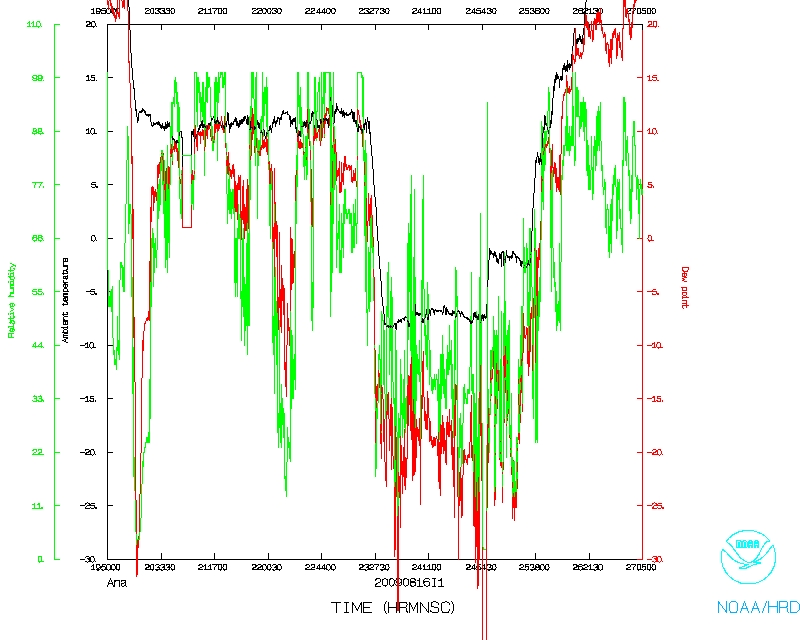 Temperature and Moisture |
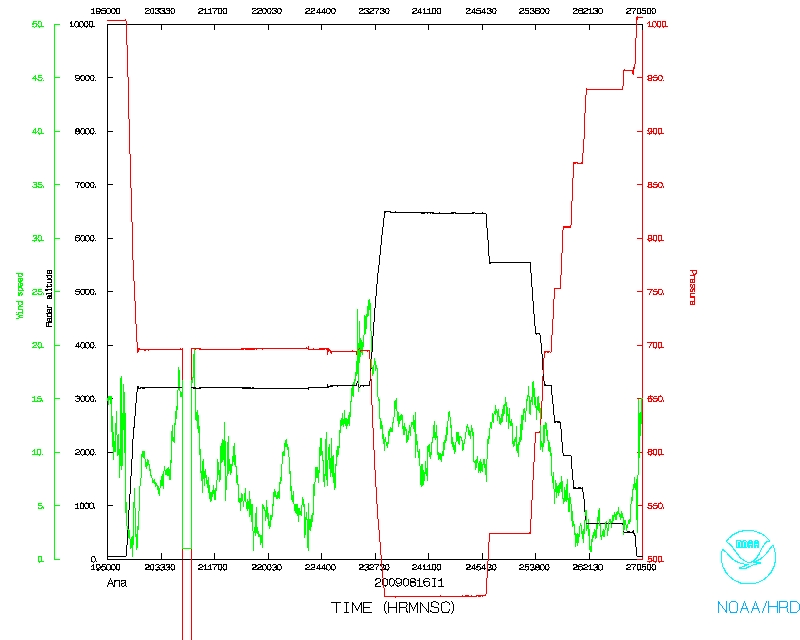 Wind and Atlitude |
Page last updated May 6, 2011
Return to Mission page.